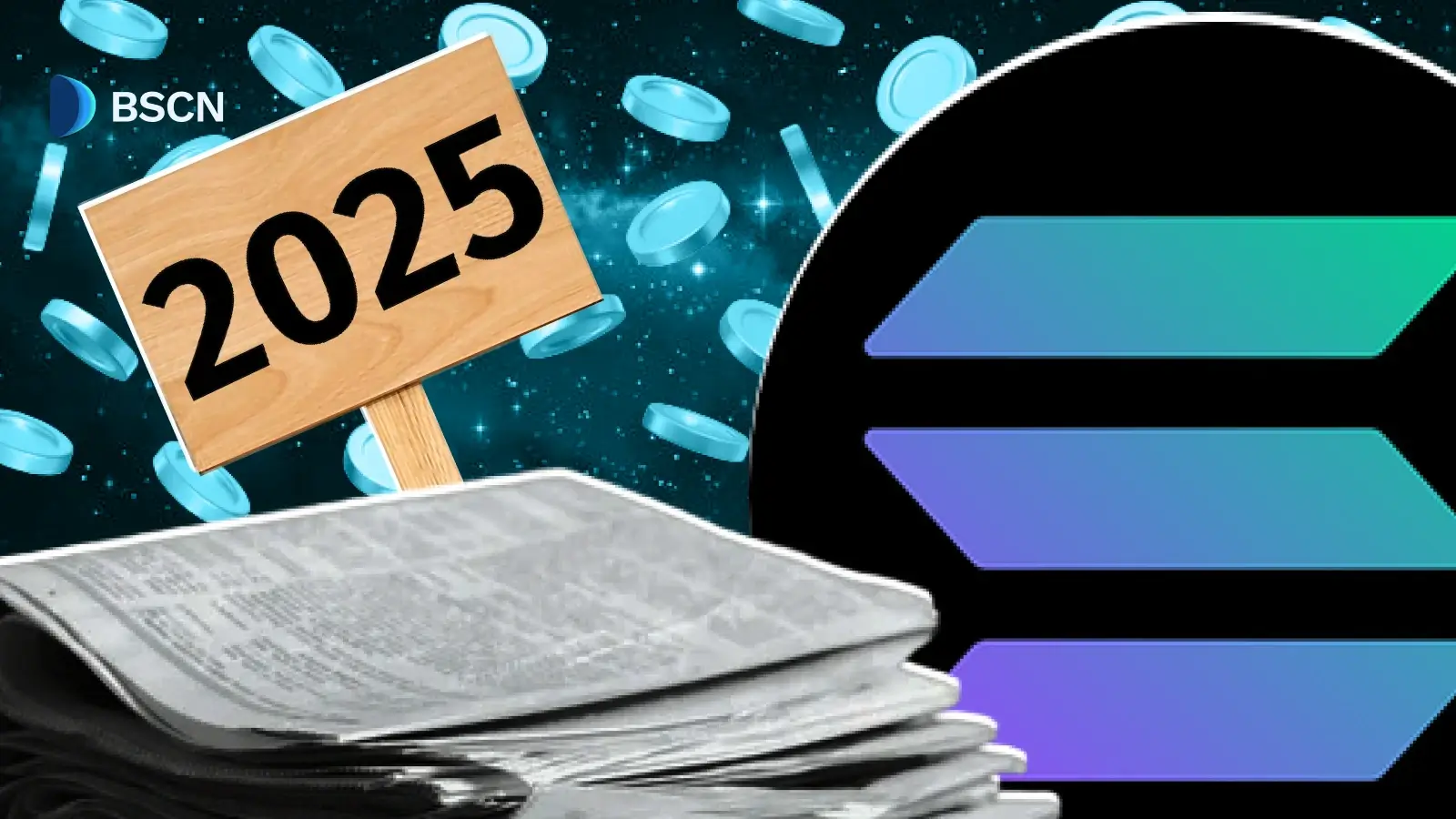Deepdive
(Advertisement)
Proof of Work vs Proof of Stake: Complete Consensus Guide

Compare Proof of Work vs Proof of Stake blockchain consensus mechanisms. Learn energy use, security, and speed differences in this complete guide.
Crypto Rich
October 3, 2021
(Advertisement)
Table of Contents
Last revision: September 18, 2025
Proof of Work uses energy-intensive mining to secure networks like Bitcoin. Proof of Stake relies on validators who lock up tokens as collateral to process transactions on networks like Ethereum. The key differences? Energy consumption, transaction speed, and how each system prevents fraud.
This choice affects every crypto user. Bitcoin transactions rely on energy-intensive mining, while Ethereum uses an efficient staking system after its 2022 consensus upgrade.
What Are Blockchain Consensus Mechanisms?
Blockchain consensus mechanisms solve a critical problem: how do thousands of computers agree on transaction validity without a central authority? Think of it like a classroom voting on pizza toppings. Some students might lie about the votes to get their preference.
These systems prevent double-spending and maintain network security, even when participants act dishonestly or go offline unexpectedly.
Two main approaches dominate the crypto space. Proof of Work makes lying expensive through computational puzzles. Proof of Stake makes dishonesty costly by requiring validators to risk their own tokens.
How Does Proof of Work Function?
Proof of Work operates through a competitive puzzle-solving process. Miners use specialized computers to find specific numbers that, when combined with transaction data, create hash outputs meeting predetermined criteria. Several interconnected steps create network security through computational expense.
The Mining Process Explained
Miners collect pending transactions into blocks, then race to solve cryptographic puzzles. The first miner to find the correct solution broadcasts it to the network. Other miners verify this solution and accept the new block if it's valid.
The puzzle difficulty adjusts automatically to maintain consistent block times. Bitcoin targets one new block every 10 minutes, regardless of changes in mining power.
Real-World PoW Performance
Bitcoin processes approximately 7 transactions per second since its 2009 launch. The network has handled over 1.2 billion transactions without a successful double-spending attack.
Ethereum processed about 15 transactions per second before switching to Proof of Stake in September 2022. Both networks prioritized security over speed in their original designs.
PoW Energy Requirements
Bitcoin's network consumes roughly 138 terawatt-hours annually - about 0.5% of global electricity usage according to the latest Cambridge research. However, a significant shift has occurred: 52.4% of Bitcoin mining now utilizes sustainable energy sources, including 42.6% from renewables and 9.8% from nuclear power. Showing a dramatic improvement from 37.6% sustainable energy use back in 2022.
Natural gas has replaced coal as the primary energy source, accounting for 38.2% of mining operations compared to just 8.9% for coal. Mining profitability requires electricity costs below $0.05 per kilowatt-hour and substantial hardware investments.
How Does Proof of Stake Work?
Proof of Stake eliminates energy-intensive mining through economic incentives. Instead of competing with computational power, validators must "stake" their own tokens as collateral to participate in transaction validation. This creates a fundamentally different security model - one based on financial risk rather than computational work.
The Validation Process
Networks randomly select validators to propose new blocks. Selection probability often correlates with stake size. The chosen validator creates a block and broadcasts it to other validators.
Other validators review and vote on proposed blocks. Once enough validators approve, typically two-thirds of the staked tokens, the block becomes final. Here's the key difference: honest validators earn rewards, while dishonest ones lose staked tokens.
Ethereum's Historic Transition
Ethereum completed its transition from Proof of Work to Proof of Stake in September 2022, resulting in a 99.9% reduction in energy consumption. Over $80 billion worth of ETH secures the network through more than 1 million validators worldwide.
The transition maintained all network functions while dramatically improving environmental impact. Most importantly, transaction processing continued without interruption during the switch. Ethereum now consumes approximately 0.01 terawatt-hours annually compared to Bitcoin's 138 TWh.
Which System Offers Better Security?
Both systems achieve security through different economic principles, each with distinct advantages and potential vulnerabilities. The key question: which approach better suits specific use cases and risk tolerances?
PoW Security Model
Bitcoin's security comes from computational work. Attackers need over 50% of network mining power to manipulate transactions. This requires enormous electricity and hardware costs. The security budget equals miner revenue, so higher Bitcoin prices generally strengthen network protection.
PoS Security Approach
Proof of Stake security depends on validator stake amounts. Attackers must own over one-third of staked tokens to disrupt consensus - requiring over $20 billion worth of ETH on Ethereum. Malicious validators lose staked tokens through "slashing" penalties.
What Are the Speed Differences?
Transaction speed varies significantly between consensus mechanisms and specific network implementations. Processing time, finality, and throughput represent key metrics that directly impact user experience and application capabilities.
PoW Transaction Times
Bitcoin transactions typically confirm within 10-60 minutes, depending on network congestion and fee payments. Higher fees usually result in faster confirmation times.
Ethereum processed transactions in 12-15 seconds under Proof of Work, though final confirmation required multiple block confirmations for security.
PoS Performance Metrics
Modern Proof of Stake networks deliver impressive speed:
- Ethereum processes roughly 15-18 transactions per second with 12-19 minute finality
- Solana handles 2,000-3,000 transactions per second using hybrid consensus
- Cardano can process around 250 transactions per second with deterministic finality
- Avalanche achieves over 4,500 transactions per second on its specialized subnets
Ethereum's ZK-rollup scaling roadmap aims to reach 10,000 transactions per second on the base layer through zero-knowledge proof verification, while Layer 2 solutions could process hundreds of thousands of transactions per second.
Which Consensus Mechanism Uses More Energy?
Energy consumption represents the starkest difference between these consensus mechanisms. Environmental impact considerations increasingly influence network adoption, regulatory decisions, and user preferences.
PoW Environmental Impact
Bitcoin mining consumes approximately 138 terawatt-hours annually, with each transaction generating 288 Kilograms of CO2 emissions according to Cambridge research. The industry has undergone a dramatic shift toward sustainable energy, with over 52% of mining now powered by renewable and nuclear sources.
This transition reflects Bitcoin's maturation as mining operations seek cheaper renewable energy sources. Additionally, 26% of global hashrate comes from "off-grid" sources, often utilizing otherwise wasted energy that wouldn't reach traditional grids.

PoS Energy Efficiency
Proof of Stake networks use minimal energy compared to mining-based systems. Ethereum's transition reduced energy consumption from 78 terawatt-hours to 0.01 terawatt-hours - a 99.9% decrease that now generates only 0.03 kilograms of CO2 per transaction.
This efficiency advantage positions PoS networks favorably as environmental regulations tighten globally. The energy savings allow computational resources to focus on transaction processing rather than puzzle-solving.
What Are the Economic Trade-offs?
Each consensus mechanism creates different economic incentives and participation requirements. These factors influence network decentralization, security costs, and accessibility for different types of participants.
PoW Economics
Bitcoin mining requires significant upfront capital for specialized hardware (ASICs) and ongoing electricity costs. Large operations benefit from economies of scale, with block rewards that halve approximately every four years as part of Bitcoin's programmed monetary policy.
PoS Financial Model
Proof of Stake requires minimum token holdings to participate. Ethereum requires 32 ETH (approximately $100,000 to over $150,000) to run a validator, though smaller holders can join staking pools. Validators earn 4-10% annual rewards proportional to their stake size.
Are There Alternative Consensus Methods?
Several newer consensus mechanisms attempt to address PoW and PoS limitations while introducing their own trade-offs. These hybrid and alternative approaches demonstrate ongoing innovation in blockchain consensus design.
Proof of History
Solana uses Proof of History to timestamp transactions before consensus. This approach enables higher transaction throughput by reducing coordination overhead between validators. The system creates cryptographic timestamps that prove events occurred in a specific sequence.
Proof of Space
Chia Network uses unused hard drive space instead of computational power. Users "farm" blocks using storage capacity, reducing energy consumption while maintaining decentralization. This approach requires significantly less electricity than traditional mining.
Delegated Proof of Stake
Networks like EOS use DPoS, where token holders vote for delegates who validate transactions. This increases speed but potentially reduces decentralization compared to direct participation.
Which Should You Choose?
The choice between PoW and PoS depends on specific priorities and use cases. Here's how to decide:
Choose Proof of Work for:
- Maximum security for high-value transactions.
- Proven resistance to attacks over long timeframes.
- Situations where energy costs are secondary to security.
- Store-of-value applications requiring immutable history.
Choose Proof of Stake for:
- Fast transaction processing requirements.
- Environmental sustainability priorities.
- Lower transaction fees and energy costs.
- Programmable smart contract functionality.
- DeFi applications requiring quick finality.
Current Market Adoption
Bitcoin remains the largest Proof of Work network by market capitalization and security budget, alongside Litecoin, Monero, and Bitcoin Cash. Ethereum leads Proof of Stake adoption after its 2022 transition, joined by Cardano, Solana, Polkadot, and Avalanche.
Central bank digital currencies (CBDCs) under development predominantly use PoS or permissioned consensus mechanisms. This preference reflects regulatory requirements for energy efficiency and transaction throughput.
What's Next for Blockchain Consensus?
Development continues on hybrid consensus mechanisms that combine different approaches. Layer 2 scaling solutions work with both PoW and PoS base layers to increase transaction capacity. Meanwhile, interoperability protocols enable networks using different consensus mechanisms to interact seamlessly.
Ethereum's ZK-rollup roadmap represents a major evolution in scaling technology. Zero-knowledge proofs will be an important element in enabling the layer-one chain to process thousands of transactions per second while maintaining security and decentralization. This approach moves validators from re-executing transactions to simply verifying cryptographic proofs.
Regulatory developments increasingly favor energy-efficient blockchain technologies. Some jurisdictions now restrict or tax energy-intensive cryptocurrency mining operations. Research into quantum-resistant cryptography may require consensus mechanism updates as quantum computing advances. Both PoW and PoS networks actively research quantum-safe alternatives.
Conclusion
Proof of Work and Proof of Stake serve distinct purposes in the blockchain ecosystem. Bitcoin's PoW provides maximum security for value storage despite high energy costs. Ethereum's PoS enables fast, programmable applications with minimal environmental impact.
The choice depends on prioritizing proven security versus transaction speed, energy efficiency, and specific functionality. Both approaches will likely coexist, with PoW securing high-value transactions and PoS powering everyday applications and smart contracts.
Sources
- Cambridge Judge Business School - Cambridge Study: Sustainable Energy Rising in Bitcoin Mining.
- Cambridge Centre for Alternative Finance - Bitcoin Electricity Consumption Index (CBECI).
- Cambridge Centre for Alternative Finance - Blockchain Network Sustainability Index.
- Ethereum Foundation - Zero-Knowledge Rollups Documentation.
- Beaconcha.in - Ethereum Staking Statistics.
Read Next...
Frequently Asked Questions
Is Proof of Stake as secure as Proof of Work?
PoS achieves comparable security through economic penalties rather than energy costs. Ethereum's $80+ billion in staked ETH creates strong attack resistance, though PoW has longer proven track records.
Why did Ethereum switch from PoW to PoS?
Ethereum switched to reduce energy consumption by 99.9%, enable faster transactions, and support future scaling upgrades. The transition maintained security while improving environmental sustainability.
Can Bitcoin switch to Proof of Stake?
Bitcoin could theoretically switch consensus mechanisms, but this would require overwhelming community consensus and massive technical changes. The Bitcoin community currently prioritizes PoW's proven security model.
Which consensus uses less electricity?
PoS uses approximately 99.9% less electricity than PoW. Ethereum's energy consumption dropped from 78 TWh annually to 0.01 TWh after switching to PoS.
Do PoS networks have lower transaction fees?
PoS networks typically offer lower fees due to reduced operational costs and faster processing. However, fees also depend on network demand, design choices, and scaling implementations beyond just consensus mechanisms.
Disclaimer
Disclaimer: The views expressed in this article do not necessarily represent the views of BSCN. The information provided in this article is for educational and entertainment purposes only and should not be construed as investment advice, or advice of any kind. BSCN assumes no responsibility for any investment decisions made based on the information provided in this article. If you believe that the article should be amended, please reach out to the BSCN team by emailing [email protected].
Author
 Crypto Rich
Crypto RichRich has been researching cryptocurrency and blockchain technology for eight years and has served as a senior analyst at BSCN since its founding in 2020. He focuses on fundamental analysis of early-stage crypto projects and tokens and has published in-depth research reports on over 200 emerging protocols. Rich also writes about broader technology and scientific trends and maintains active involvement in the crypto community through X/Twitter Spaces, and leading industry events.
(Advertisement)
Latest News
(Advertisement)
Crypto Project & Token Reviews
Project & Token Reviews
Comprehensive reviews of crypto's most interesting projects and assets
Learn about the hottest projects & tokens

















